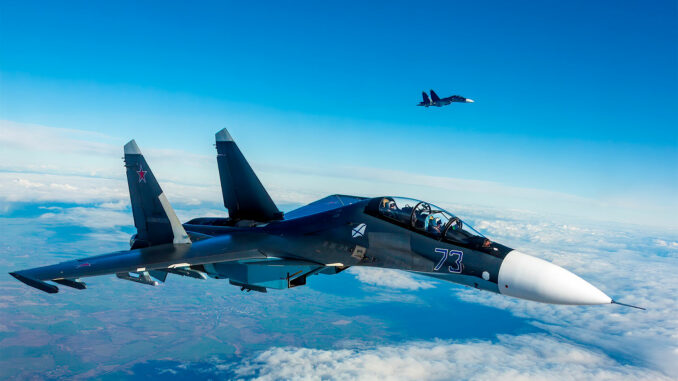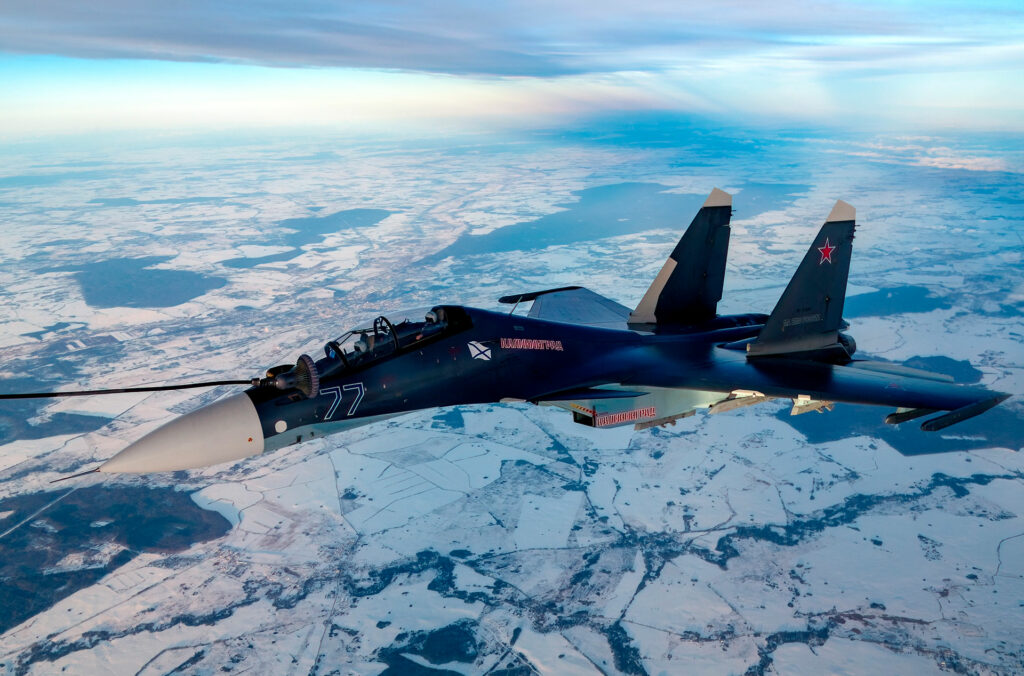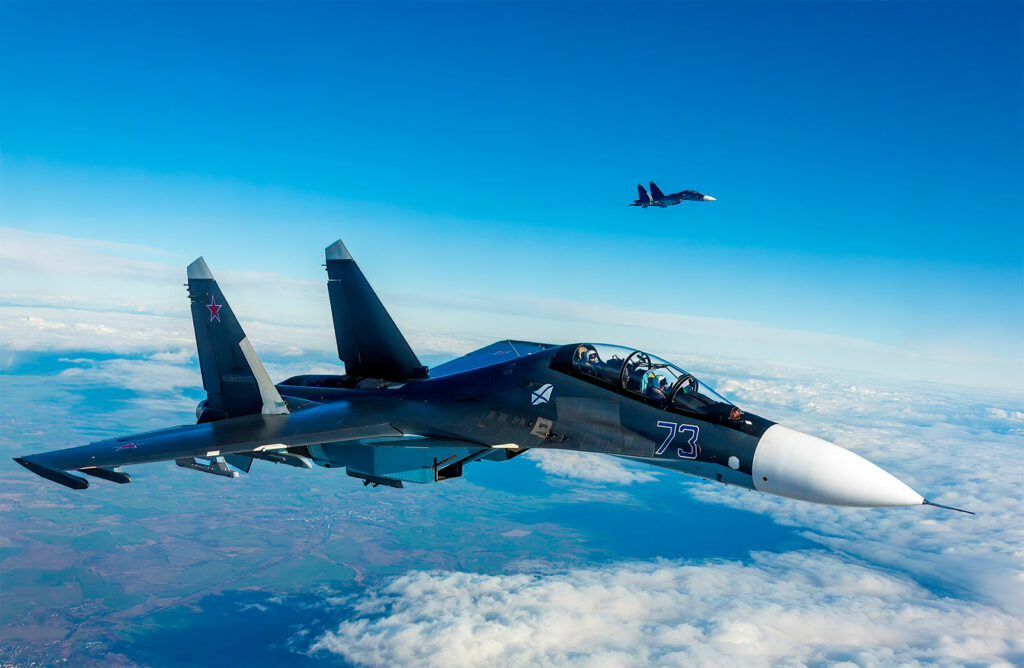
On May 2, 2025, Ukraine used Magura V7 naval drones equipped with AIM-9 missiles to shoot down two Russian Su-30 fighter jets over the Black Sea.
The May 2, 2025 attack: a coordinated operation
On May 2, 2025, three Ukrainian Magura V7 naval drones were deployed near Novorossiysk, a strategic Russian port on the Black Sea. This operation, carried out by the Ukrainian Main Intelligence Directorate (HUR), aimed to intercept Russian Su-30 Flanker fighter jets. Two of the drones launched AIM-9 Sidewinder missiles, shooting down two Su-30s.
The first aircraft was hit and fell into the sea, its crew being rescued by a civilian vessel. The second was also shot down, with no survivors reported.

The Magura V7: a missile-armed naval drone
The Magura V7 is an evolution of the Ukrainian Magura V5 naval drone. Measuring approximately 8 meters long, it is designed for air defense missions and is equipped with AIM-9 Sidewinder missiles.
This drone is capable of autonomous navigation, with GNSS, inertial, and visual navigation systems. It can transmit HD video streams in real time and has advanced cryptographic protection.
The AIM-9 Sidewinder missile: technical specifications
The AIM-9 Sidewinder missile is an infrared-guided air-to-air missile, originally developed for launch from fighter aircraft. The AIM-9M version, used in this operation, has the following characteristics:
- Length: 2.87 meters
- Weight: 86.2 kg
- Range: up to 18 km
- Maximum speed: Mach 2.5
- Explosive payload: 9.4 kg
This missile is designed to track the thermal signature of targets, making it effective against jet aircraft.
The Su-30 Flanker: a Russian multirole fighter
The Su-30 is a multi-role fighter aircraft developed by Russia. It is capable of conducting interception, air superiority, and ground attack missions. Its characteristics include:
- Maximum speed: Mach 2
- Range: approximately 3,000 km
- Armament: 30 mm cannons, air-to-air and air-to-ground missiles
Each aircraft is estimated to cost around $50 million.

Strategic implications of the operation
This operation demonstrates Ukraine’s ability to integrate advanced technologies to compensate for its numerical inferiority compared to Russia. The use of naval drones armed with air-to-air missiles represents a major tactical innovation, disrupting Russian air operations in the Black Sea.
According to Russian sources, this attack raises concerns about the safety of their aircraft in the region and highlights gaps in their defense against drones.
Future prospects
The integration of air-to-air missiles on naval drones could become a trend in modern conflicts, offering increased operational flexibility. For Ukraine, this capability strengthens its asymmetric defense strategy and could influence Russian tactics in the Black Sea.
Russia will need to adapt its methods to counter this threat, potentially by developing specific countermeasures or modifying its patrol patterns.
War Wings Daily is an independant magazine.